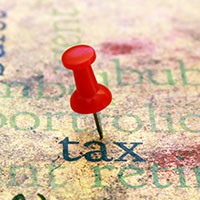Last updated: August 09 2016
It’s Back To Tax School Month: Brush Up On Six Tax Tips

There are several tax credits that students, their parents and teachers should be sure to claim on their 2016 tax returns. Here’s a synopsis of them; the trick is to keep documentation for the claims now.
Tuition, Education and Textbook Amount. This non-refundable credit is worth 15% of the cost of tuition at a post-secondary level, plus an amount for each month in which the student attends school on a full-time or part-time basis. The federal Education Amount is $400 per month for full-time students and $120 per month for part-time students. Each province also has its own provincial credit for education. Note that 2016 is the last year for earning this credit.
Beginning in 2017, only credits earned in 2016 and carried forward will be claimable. In addition to the Education Amount, students may claim a Textbook Amount of $65 per month of full-time attendance and $20 per month of part-time attendance. Like the Education Amount, the Textbook Amount will not be available after 2016.
Qualifying educational institutions, including Knowledge Bureau, will issue a T2202A slip to students, indicating the eligible amount for the Tuition credit and any eligible months for the Education and Textbook credits. Flying schools and schools outside Canada will issue form TL11A, B, C, or D to document such claims. No other receipts are required to claim these credits so don’t fret if you lose tuition or textbook receipts.
Self-employed taxpayers who are claiming tuition as a business expense, on the other hand, must retain those individual receipts for business deductions for tuition fees.
 Transfer of Credits. Where the student earns more tax credits than they need in the current year, they may either carry forward those credits (for use in future years) or they may transfer a part of the claim to their spouse or other supporting individual. Transfers are limited to $5,000 minus the amount claimed by the student. Schedule 11 must be completed to determine the amount available for transfer. Transfers to a spouse are done using Schedule 2 of the transferee’s tax return. The student should complete the transfer section of the T2202A form to authorize the transfer.
Transfer of Credits. Where the student earns more tax credits than they need in the current year, they may either carry forward those credits (for use in future years) or they may transfer a part of the claim to their spouse or other supporting individual. Transfers are limited to $5,000 minus the amount claimed by the student. Schedule 11 must be completed to determine the amount available for transfer. Transfers to a spouse are done using Schedule 2 of the transferee’s tax return. The student should complete the transfer section of the T2202A form to authorize the transfer.
Provincial Tuition Rebate Programs. In an effort to retain graduates, two provinces will reimburse post-secondary graduates for tuition paid if they remain in the province. Saskatchewan will provide a tax credit for up to 100% of the tuition paid if the graduate remains in the province long enough. Manitoba will provide a tax credit up to 60% ($2,500 per year to a lifetime maximum of $25,000). Manitoba will even provide an advance rebate of up to 10% ($500 maximum) for fees paid in the current year, even if the tuition credit was transferred to a spouse or supporting person. New Brunswick cancelled their tuition rebate program starting this year (2016).
Teacher and Early Childhood Educator School Supply Tax Credit. This year, teachers and early childhood educators who pay for teaching supplies out of their own pocket can claim a credit for up to $1,000 of such expenses. Receipts will be required to substantiate such claims. This non-refundable credit is worth 15% of the amount spent, to a maximum credit of $150.
Walter Harder, DFA-Tax Services Specialist, is co-author of several of Knowledge Bureau’s DFA-Tax Services Specialist Courses. Enrol online by September 15, or start your studies now. Call 1-866-953-4769 for assistance or take a free trial





